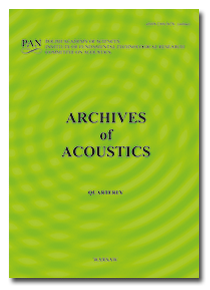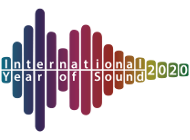Archives of Acoustics,
4, 4, pp. 347-352, 1979
Ipsilateral stimulus intensity and tympanometry in man
The tymapanometric characteristics of a human eardrum are studied under the influence of various intensities of the ipsilateral stimulation for the acoustic reflex. Emphasis is placed on the position of the tympanograms relative to atmospheric pressure, at the different stimulus intensities. The results indicate that there is no deviation of the notch of the tympanogram in the intensity range from 40 to 75 dB SPL, but there is an increase in the relative shift of the notch above 75 dB SPL. The change in deviation is caused by the suppression of the elicitation of the stapedius muscles in man. The ratio of the deviation, with and without the stimulus, is found to be 2.35 at 1000 Hz, 115 dB SPL, the highest intensity used in this work. The results reported are the average values of six normal human ears.
Full Text:
PDF
Copyright © Polish Academy of Sciences & Institute of Fundamental Technological Research (IPPT PAN).
References
W. L. CRETEN, K.J. van CAMP, Transient and quasistatic tympanometry, Seand. Aundiol. 3, 39-42 (1974).
T. J. FRIA, P.W. ALBERTI, Personal communication. Department of Otolaryngology, Mount Sinai Hospital, Toronto, Canada.
O. JEPSEN, Middle-car muscle reflexes in man. in J. JERGER, Modern developments in audiology, Academic Press Inc. New York 1963, 193-239.





